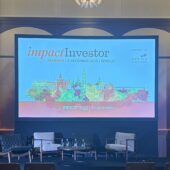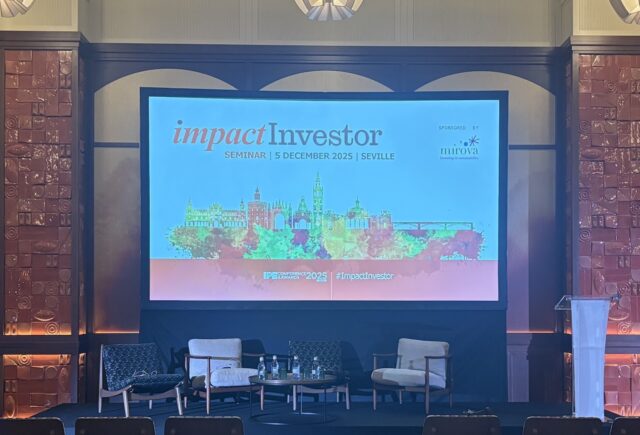The new framework has been developed to help impact fund managers improve how they disclose impact results to their investors

BlueMark, an independent provider of impact verification and intelligence, has published a framework designed to help impact fund managers improve how they disclose their impact results to their investors, and to make it easier for investors to assess the quality of the impact reports they receive.
Raising the Bar 2.0: BlueMark’s Framework for Evaluating Impact Reporting follows 18 months of research, which included 19 verifications of client impact reports, analyses of more than 30 other impact reports, and interviews with more than 50 impact investing experts to develop the impact reporting verification methodology.
In response to questions from Impact Investor, Sarah Gelfand, managing director at BlueMark, said that the interviews with impact investing experts had shown a clear dissatisfaction with the current state of impact reporting.
“Fund managers were committing significant resources to their reporting, yet for allocators and other stakeholders there was no way efficient way to evaluate impact performance or to compare one fund’s impact results to another, she said. “As one of the experts we spoke to, Mike McCreless from Impact Frontiers, said ‘It’s like we’ve settled into a negative equilibrium, where everybody agrees that the status quo is suboptimal.’”
Gelfand said that to solve this challenge, BlueMark had looked for areas of agreement on what constituted high-quality and decision-useful impact reporting.
“We found a surprising degree of alignment among market actors on these ‘key elements’ of impact reporting, which helped provide the foundation for creating BlueMark’s framework for evaluating impact reporting,” she said.
Gelfand said BlueMark’s verification methodology had been designed to help impact investors and their allocators to understand where they excel in their reporting and where they still have room for improvement in order to ‘raise the bar’ for impact reporting and help advance best practices across the impact investing field.
This is the second report in the company’s “Raising the Bar” series, and builds on the work of the first report, published in April, which looked at the key elements of quality impact reporting that emerged from consultation with impact investing experts and an analysis of existing impact reports.
Pilot tested by impact investors
The most recent phase of the research for Raising the Bar 2 involved a pilot project with Impact Frontiers, a market-building collaborative for impact investors, and seven of its member impact fund managers, each of whom paid to have their impact reports verified by BlueMark using the new framework. These seven firms included Anthos Fund & Asset Management, Big Society Capital, Impact Engine, Rally Assets, Japan Social Innovation and Investment Foundation (SIIF), and TELUS.
Asked about the key takeaways from the pilot project, Philipp Essl, senior social impact director for Big Society Capital, said the impact investment industry was still working towards a shared understanding of what good impact reporting looked like and that the BlueMark framework was an important step towards reaching consensus on this topic. He also said that more work needed to be done to ensure that the industry had the required qualitative and quantitative impact information and data available for investors to report in ways that were meaningful and transparent and to allow for comparability across investments and investors.
“Standardised impact data is an important part of this,” he said, adding that asset owners also needed “to become better consumers of impact reports, really engaging with their content and asking for and reinforcing good practice across their investees.”
Completeness and reliability
The company has built the framework based on two criteria; completeness and reliability. Under the first, BlueMark assesses the scope and relevance of reported information related to an investor’s impact strategy and results at both the portfolio and investment level, and in the second, they assesses the clarity and quality of impact data presented in a fund manager’s impact report, including underlying data management practices and systems.
Ratings are assigned to these criteria to help fund managers understand where they excel in their reporting and where they still have room for improvement. BlueMark said the ratings would also be used to create industry benchmarks.
The framework’s methodology also aims to help external stakeholders and in particular investors in impact funds, to gauge whether funds are reporting on the right things and in the right way, but does not go as far as to define what ‘good’ or ‘bad’ impact performance looks like. BlueMark said this aspect remained a challenge due to the limited availability of data on performance measures that would allow for appropriate comparisons across different types of impact funds and strategies.
Impact reporting challenges and opportunities
Gelfand said through its research the company had identified several challenges facing fund managers and allocators reporting on impact. These include the variety of impact measurement frameworks and inconsistent LP demands, which make it difficult for GPs to find a common approach to reporting; impact performance reports being primarily used to support fundraising and marketing efforts, rather than for decision-making, and the fact that many impact investing frameworks emphasised standardised metrics over qualitative information, despite both being central to understanding impact performance. Gelfand also said that GPs currently had little incentive to be first-movers in producing more balanced, decision-useful reporting.
“These challenges are all interlinked and reflect the complexity of raising the bar for impact reporting,” she said.
Gelfand said that despite the challenges there was a growing appetite among both fund managers and allocators for decision-useful impact reporting.
“We see this as a sign of a rapidly maturing market. As more impact investors enter this market, there will be an ever-greater need to identify top performers, just like there is in more traditional financial markets,” she said.
But she also noted that everyone BlueMark had spoken to about the research recognized that headline metrics did not tell the full story about impact performance, echoing Essl’s call for both qualitative and quantitative information.
“There needs to be a way to balance quantitative and qualitative information, and a way to evaluate both successes and failures. This is the only way we as a field can learn and share best practices,” she added.






